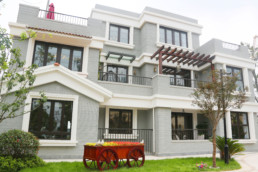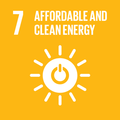WinSun’s 3D printing technology uses industrial solid waste to replace cement in the production of a new type of low-carbon building.
Despite the 17% annual growth of China’s enormous construction industry, which has increasing influence internationally, the sector has lacked innovation in new building techniques. Since 2014, WinSun’s mission has been to change that, using 3D printing to produce more than 22 million m2 of prefabricated building materials from industrial solid waste. The “ink” used is made from 100% recycled materials, saving 18,000 tonnes of cement in 2016 alone. The structures are highly energy efficient, can withstand magnitude 9 earthquakes, and save significant time and resources during construction, with less waste and pollution of the environment.

This solution was featured in Construction in Progress market of the 2018 Global Opportunity Report, and was selected based on the criteria of that report.
How the Global Goals are addressed

Good health and well-being
By using 3D printing structures in factories, air pollution from construction is vastly reduced, a benefit to all those suffering from respiratory illnesses.

Affordable and clean energy
WinSun’s buildings are 40% more energy efficient than conventional alternatives, reducing the energy demand on China’s coal-dominated electricity grid.

Sustainable cities and communities
WinSun is demonstrating innovative techniques that can help reduce the environmental footprint of an industry that is quite literally building our future.

Responsible consumption and production
The “ink” used for the 3d printing is made from 100% recycled materials, from construction and mining waste – addressing the waste in the industry.


